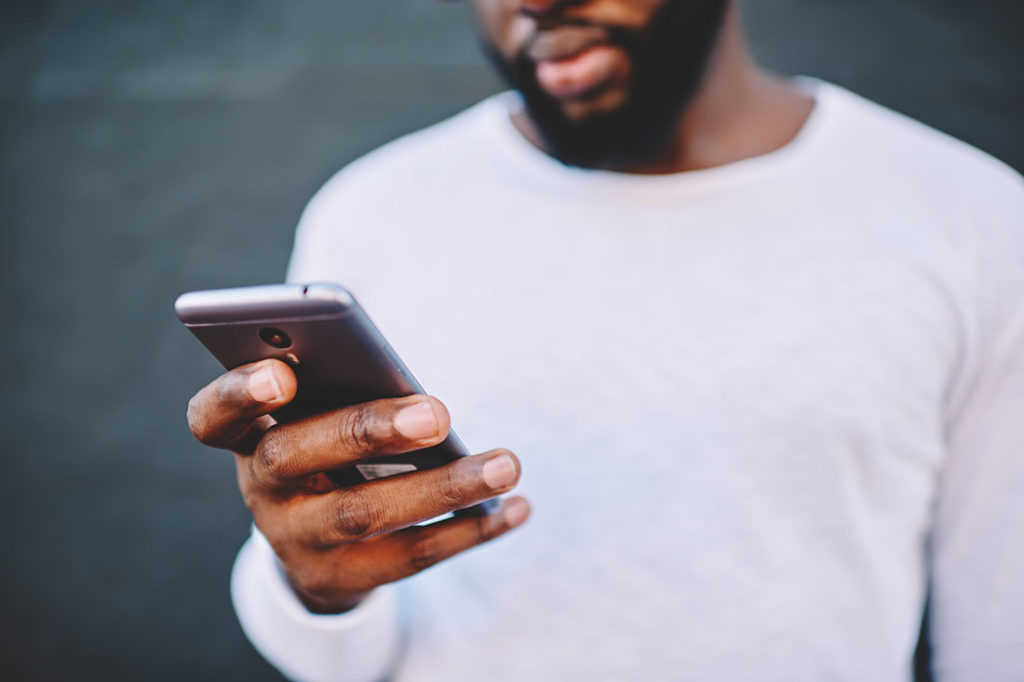Recently, I’ve been getting the dreaded Screen Time notifications, telling me that my time looking at my phone has increased by a significant margin. I know I’m not alone these last few weeks, and it makes sense—so many of us are sitting at home a lot these days.
Although our phones are beneficial in these disconnected times—right now, it’s often the only way we can see our friends or our families—I have to be honest, when I look at what I’m using my phone for the most, it isn’t for that.
It’s for things like this NASCAR game I got suckered into downloading thanks to an Instagram ad. I don’t even like NASCAR! But such is the level of my boredom, and I was instantly hooked.
The point is, with all the benefits of our phones, there’s also drawbacks to staring at it all day.
So, while we’re all on our couches, scrolling away, it seems fitting to share some ideas for cutting down on screen time. Pulling yourself away from the notifications and social media apps—and yes, racing games—will make you feel better about your day. Choose at least one to start!
1. Set screen-time limits.
This is the easiest way to cut down on your screen time. Apple has a way to set time limits on individual apps, groups of apps or your whole phone. You can even set dark hours for when you don’t want to use your phone, like when you go to bed and when you first wake up. If you really want to get serious about it, have someone you live with put in the password so you can’t easily get around your own regulations.
2. Delete time-sucking apps.
If you feel like even 30 minutes on a certain app is draining you, just delete it! Deleting time-sucking apps removes temptation, and the clean home screen feels good, too. If you don’t trust your self-control and want an added obstacle, you can set your content restrictions so that you can’t download new apps. You can find your password keeper if you must download something.
3. Read a “real” book.
Digital reading is an amazing thing. E-readers are convenient and great for traveling or poolside. But there’s nothing quite like cracking open a physical book, is there? They have a certain smell and feel to them that’s more soothing than a device. And being at home, especially in this uncertain time, why not choose the thing that brings you a sense of comfort? Plus, a book doesn’t come with the ability to pull up an internet browser the second you get distracted by something.
If your bookshelf needs some TLC, order a book from a local bookstore to support your community! Try a personal development classic you’ve been meaning to read, or one you’ve never heard of to mix things up—either way, you’ll find it beneficial.
4. Listen to a podcast.
Now, this idea does require you to use your phone, but just to start; you can press play and set your phone aside while you stream your favorite show. My wife runs a bakery out of our house and loves listening to entrepreneurship podcasts while she makes cookies. Time goes by faster, and she’s learning business skills while she bakes. You can squeeze in a listen during some of your daily activities, too, like walking the dog, cooking dinner, cleaning the house—and this kind of multitasking is approved.
Need some recommendations? Start with some of the SUCCESS New Thought Leaders:
- Tom Bilyeu
- Brendon Burchard
- Rachel Cruze
- Tim Ferriss
- Marie Forleo
- Rachel Hollis
- Lewis Howes
- Trent Shelton
- Jay Shetty
- Gary Vaynerchuk
5. Write down your workout plan.
Maybe this one seems odd, but the point here is to think of all of the ways that we rely on our screens and try to work around them. Streaming a workout video on your phone or computer is really helpful when you can’t go to the gym or the studio, but if you’re trying to go on a screen-time fast, there are other options. Like using a notebook to write out your workout plan, or a sheet of paper to print it off. Exercising is a great way to clear your mind, so don’t let a device interrupt that Zen.
6. Play a board game or a card game.
Board games are a great way to get the whole family together and away from all of your screens. Classic strategy games like Catan and Risk (that you normally might not have time to play) can stretch over multiple nights, now that you don’t have plans. Just you and your roommate or significant other? Try a strategic party game that’s playable with as little as two players, like Unstable Unicorns or Codenames. Or quicker games like Bananagrams. And if you live alone, there’s always a good old-fashioned deck of cards or that puzzle you started last week… And, of course, go outside in your yard if you have one! You can play lawn games like Spikeball, or put your woodworking skills to the test and make your own cornhole set.
7. Use a recipe book.
Quarantined at home is the perfect opportunity to learn to cook if you don’t usually have the energy after a long commute, or to try a new recipe if the kitchen is already your happy place. Home chef or not, your impulse is probably to hop on Pinterest or pull up your favorite food blogger’s Instagram to find inspiration, but if you’re looking for a true escape from the screen, how about dusting off the cookbooks that live on top of your refrigerator instead? There’s almost certainly some hidden gems in their pages. Or what about that family recipe you’ve never made yourself but loved to eat growing up? Combine two good things by calling your parents or grandparents to check in and ask for the recipe. Write it down on a notecard so you can keep it in your kitchen and consult it—no screen required!
8. Leave your phone outside the bathroom and the bedroom.
It’s OK to admit that you take your phone in the bathroom with you; most people do. But it’s actually a good time to unplug. If you’ve been quarantined with little kids or a clingy roommate for weeks, sometimes those quiet moments are few and far between. Sit quietly with your thoughts, or leave a magazine in the bathroom if you want to be occupied.
Also, a tip I got from Robin Sharma’s book The 5 AM Club: Buy an old-school alarm clock and leave your phone in another room at night. The light emitted by your phone makes it harder to sleep, and if you’re working on being more self-disciplined, the faster you fall asleep, the easier it is to get up early and win the day.
9. Set specific times to check email and notifications.
OK, so you’ve set those screen-time limits as your very first step, but you also need to be checking your emails to make sure you don’t miss anything important. Try setting specific times to check everything. Whether that’s every three hours, or one five-minute period per hour, or once a day, depends on your work and personal situation. Find what works for you, and you won’t be needlessly refreshing your email or reacting to notifications every five seconds anymore.
10. Mail handwritten letters.
Handwritten letters are just more thoughtful and personal than text or email. Video calls, of course, are a wonderful way to stay connected in a disconnected world, but snail mail is always a special surprise. Send your grandparents a card (wash your hands first!), or have your kids write letters to family members or friends. Bring back the joy of pen pals!
I am far from the model citizen when it comes to limiting screen time, but that also means I’ve tried lots of different things over the years, and these are some of my quick wins and efforts that have made me better. Try them out for yourself, and come up with solutions of your own.
You’re probably reading this on a screen, so now’s the time to put the phone down and step away. I’ll be doing the same, but first I’ve got to check on my NASCAR driver… Wait, nope. I deleted that app!
Photo by GaudiLab/Shutterstock.com










